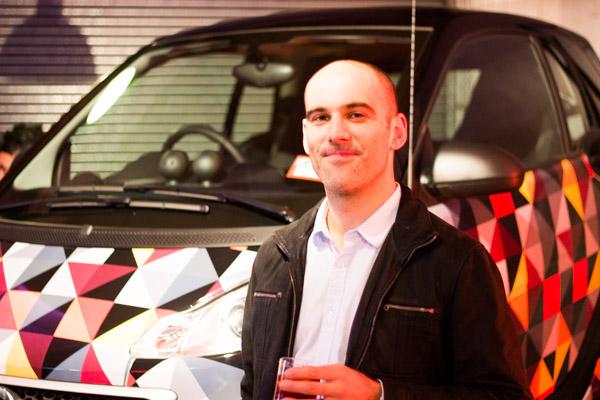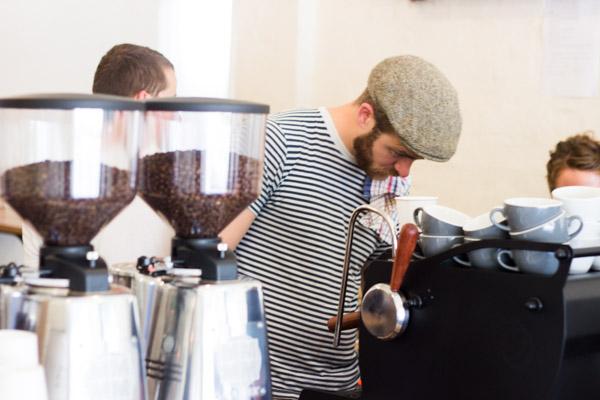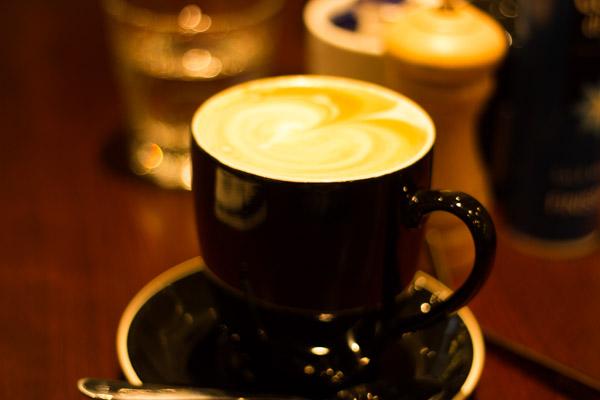The Coffee Prerogative

There is a renaissance of coffee going on and no one seems to have noticed! Certainly we all remember the remarkable performance by Australian Barista Champion Matt Perger at the 2013 World Barista Championships in Melbourne. He broke the "rules". He literally walked on water and levitated beyond any reason or subjection of the coffee world. Matt did what no one has done before: took science to the coffee masses and confounded those who thought they knew what they were doing.
While you make be a coffee professional and have varying degrees of agreement with my personal opinion this article is written to the coffee addict; the drinker who wants to have a relationship with the love of his cup.
Something happened in 2008 when Voice Systems Technologies brought the power of refractometry to coffee. Like the Gutenberg printing press, an enlightenment came to coffee that has since changed the way we view our beverage and few are applying its power! Today Matt Perger states that 95% of specialty cafes in Melbourne - which is meant to be leading the world on coffee - are under extracting their coffee! What!? I hear you ask? What does that mean? Let me explain!
This article is about a renaissance in coffee that is taking place. Like the impact Google has had on advertising and Amazon to publishing - science and technology is changing the way we drink and make coffee!
This article will focus on the OBJECTIVE brewing of coffee and the PRODUCTIVE operation of a coffee bar. Rest assured by the end of this feature article you will be speaking the lingo and it won't hurt to say "refraction and extraction!"

PRODUCTIVITY
No one questions the authority of a head chef or the systems and organisation of a kitchen. However few people give coffee the respect it deserves in a commercial setting.
My background in business and organisational development has given me great insight into how people's perceptions in business block productivity. Think of productivity as the juice that fuels your profits. Your staff are your petrol, your products and services are your engine, and your customer service your aerodynamics.
However the nitrous oxide that pushes you above and beyond your competitors is productivity. It makes your work easy. Do you want work to be easy, and a joy? I'm talking about a giddy excitement in the inside that makes you want to do it for free! It's called productivity and it comes from perspective.
No one would expect Shannon Bennett's kitchen in Vue de Monde to create a cake with no recipe. It's the same with coffee!
Since the creation and application of VST (voice systems technology) technology in 2008 to espresso we are now able to OBJECTIVELY judge espresso coffee. We now know when an espresso is actually strong due to the total dissolved solids in a solution of espresso. It is no longer subjective. It is a fact. These figures are informing and changing the way we roast, brew, grind and prepare coffee and now is also informing our purchasing - see latest video by St ALi:
OBJECTIVITY
These are two powerful words: productivity and objectivity and used together...well you may be just starting the next Coffee empire!
This objectivity has empowered us to apply specific recipes to our espresso brewing. Baristas and coffee bars are empowered with a set of instructions that guide us towards optimum extraction.
Extraction is loosely defined as how much coffee you've taken out of the coffee into the cup! We know that espresso tastes good at around 9% TDS and filter tastes good at around 1.4% TDS.
The aim with extraction is to take with you all of the flavour and nothing else into the water. When you over extract you are taking bad flavours caffeine and toxins into the water. It tastes watery, insipid, sour. When you under extract you are leaving much of the goodness behind and it tastes oily, salty, bitter, muddled and intense.
A perfectly extracted coffee tastes juicy, balanced and smooth. Ever had a coffee that wasn't badly prepared: it wasn't burnt or bitter it just tasted like nothing? Or perhaps you could only taste dryness or sourness? We can now objectively tell exactly what is going on in a coffee. If you give me a few numbers I can tell you what your coffee tastes like without tasting it. It's amazing.
Currently I'm working with a sensory lab coffee where we dose 21 grams of coffee and brew 50 grams of coffee. With a TDS measuring 9.4 my extraction is 22% - which is calculated as brew weight X TDS % Dose (or 50g x 9.4 % 21 = 22!) I guarantee coffee won't taste good below 16 or above 30.
Yet baristas around the world are compressing, adjusting and tapping their way all around those numbers and beyond! It's really a time of enlightenment we are in!
When a head barista is "dialing in" an espresso he is following a recipe.

FREEDOM - there is no longer a superstition about coffee:
People say, "Oh the crema looka good!"
"It "dropped" after 4 seconds!"
"The wind changed!"
"Did your face stay the same?!!!!"
No. There is a revolution, no a renaissance of coffee around actual factual science and it is very liberating. It's easy. It's empowering!
Once you understand the numbers you can move along those extraction percentages intentionally and objectively. You can walk into a foreign bar, taste a coffee, make 1 or two adjustments and then "wham" - nail that sucker into nuanced perfection in 1 shot without throwing a kilogram of coffee down the drain in the process.
We know that a change in grind will directly increase or decrease both TDS and extraction simultaneously. A recipe will however direct the marriage between TDS and ext intentionally and directly.
This is where the solubility phenomena comes in. Have you noticed a trend over the years of espresso shots getting shorter and shorter? As we subjectively tasted sweeter coffee in shorter shots we also roasted darker because darker roasted beans are more water soluble. So you need less water and time to extract the same amount of coffee.
Where 30 gram yields were tasting bitter and 20 gram yields tasted sweet roasters informed their baristas dose higher! And pull shorter shots. Those sweet, oily, drippy shots that "dropped after 8 seconds" and finished at 12 (!) miseducated a population of coffee lovers to make a wrong assumption - shorter shots are better!
Combine this with the acidity of milk and you combine those acidic shorter shots with milk and you have a generation of double ristretto half latte drinkers! Where did the magic and half latte go the past few years! Well, roasters and baristas have realised they can dose less, pull longer shots and roast lighter to get more sweetness and full flavour even with. Single shot!
I love champion cafes like Maling Room who pull full single shots and serve lattes with brilliant vibrant and full flavour that others only dream of with massive doses and heavily restricted double ristrettos. I personally prefer the full balanced flavour of an appropriately roasted bean, one with solubility tested and in mind, so than I am drinking in my cup what I intended to drink: a full flavoured, balanced, sublime shot that showcase all of the characteristics and flavour of the bean.
Here is how it looks:
Darker roasted beans are more water soluble --> Baristas pull shorter shots to gain sweetness (or dose more) --> Roasters roast even darker when bitterness ensues.
Roasters measure and match solubility of beans to intentionally roast to optimum brewing potential --> baristas can pull full long and juicy espressos from smaller doses --> tastes good!
We are now pulling longer and longer shots to the point where Matt Perger and others are pulling half litre espressos that taste sensational. That's right 300-500g yields from 18-20g of ground coffee!
The game has indeed changed.
Secondly there are systems in place in any manufacturing line. Be it Shannon Bennett's kitchen or the brew bar at St ALi we should expect there to be a specific system and process to making the end product.
I'm sure Shannon Bennett doesn't have to hold an investigation to find the butter. I'm sure the butter is always kept where the butter is kept. I'm sure there is a specific chain of command:
Head Chef
Sous chef
Cooks
Kitchen hands
Dishy
It should be the same in any decent coffee bar:
Head Barista - controlling the shots
Second barista - doing milk
Third barista or bar back - pouring, restocking and so on.
While every bar is different every commercial bar should have a clear chain of command and a clear system and process.
Here's an example of how a great bar works:
Orders --> Grinder --> Machine --> Steam --> Sink & Dispatch.
Cleanliness is done all the time. Unfortunately many bars and baristas do not have the recipe for success.
So the game has changed. You should be looking for longer shots of full flavoured espresso from bars with military precision and court marshals for those who don't back flush ever second shot! That may never happen - unless I own a bar - so next time you're at a cafe or making a coffee thing: am I being productive? Am I being objective?
Stay tuned for more inspiring and scientific features and reviews by Jonathon Sciola of Jonathonsciola.com
If you want more information on VST technology I highly recommend contacting @mattperger on Twitter or This email address is being protected from spambots. You need JavaScript enabled to view it.
Jonathon Sciola is a professional barista trainer, business coach and probation all speaker.
